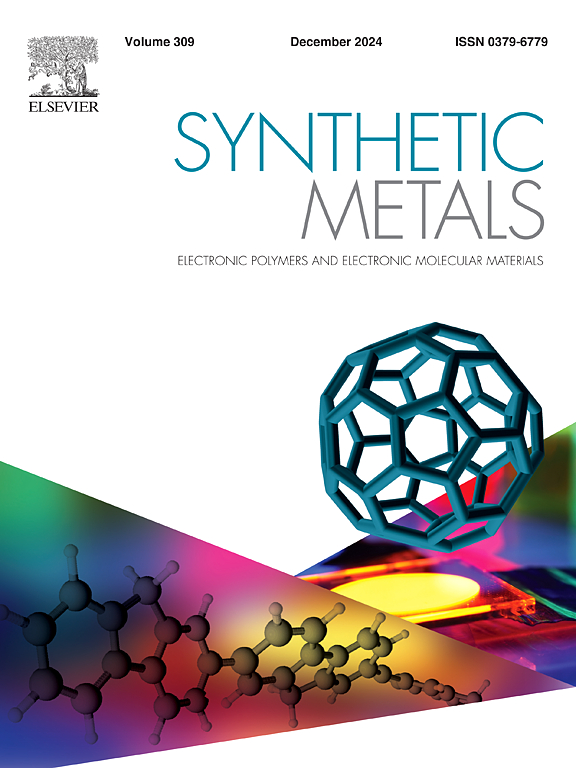Design and synthesis of pyridine-bridged benzothiazole-based D-A system for SRAM memory devices
IF 4
3区 材料科学
Q2 MATERIALS SCIENCE, MULTIDISCIPLINARY
引用次数: 0
Abstract
This study focused on designing small donor-acceptor (D-A) frameworks for resistive memory devices. We synthesized five new organic molecules using pyridine bridged to benzothiazole and various donor moieties (triphenylamine, naphthalene, benzothiophene, t-butyl phenyl, and mesityl group) via Suzuki cross-coupling to study their memory performance. The compounds with triphenylamine and naphthalene exhibited good semiconductor behavior, with a band gap of 3.11 eV and 3.44 eV, respectively. The benzothiazole moiety, employed as a shallow trap in the acceptor segment, demonstrated the SRAM characteristics of all devices. This study examined how varying the potency of electron-donating substituents impacts charge transfer and volatile memory behavior in a small D-A system. Memory devices with triphenylamine and naphthalene donors showed binary SRAM behavior with high ON/OFF ratios of 2.82 × 103 and 2.36 × 103, while t-butylphenyl and mesityl donors exhibited lower ratios of 1.43 × 101 and 4.08 × 101, respectively. All the compounds exhibited switching characteristics at a low threshold voltage of −1 to −1.3 V. The analysis of HOMO, LUMO energy levels, and ESP images of all compounds from the DFT study, collectively indicate charge transfer and trapping are the operative mechanisms in volatile SRAM devices.
设计和合成用于 SRAM 存储器件的吡啶桥接苯并噻唑基 D-A 系统
这项研究的重点是设计用于电阻式存储器件的小型供体-受体(D-A)框架。我们利用吡啶与苯并噻唑桥接,并通过铃木交叉偶联合成了五种新的有机分子,这些分子具有不同的供体分子(三苯胺、萘、苯并噻吩、叔丁基苯基和间苯二酚基团),并研究了它们的记忆性能。含有三苯胺和萘的化合物表现出良好的半导体性能,其带隙分别为 3.11 eV 和 3.44 eV。苯并噻唑分子被用作受体段的浅阱,显示了所有器件的 SRAM 特性。这项研究考察了不同电子捐赠取代基的效力如何影响小型 D-A 系统中的电荷转移和挥发性存储器行为。含有三苯胺和萘供体的存储器件显示出二元 SRAM 行为,具有 2.82 × 103 和 2.36 × 103 的高导通/关断比,而叔丁基苯基和间苯二酚供体则显示出较低的导通/关断比,分别为 1.43 × 101 和 4.08 × 101。所有化合物都在-1 至-1.3 V 的低阈值电压下显示出开关特性。DFT 研究对所有化合物的 HOMO、LUMO 能级和 ESP 图像的分析表明,电荷转移和捕获是挥发性 SRAM 器件的运行机制。
本文章由计算机程序翻译,如有差异,请以英文原文为准。
求助全文
约1分钟内获得全文
求助全文
来源期刊

Synthetic Metals
工程技术-材料科学:综合
CiteScore
8.30
自引率
4.50%
发文量
189
审稿时长
33 days
期刊介绍:
This journal is an international medium for the rapid publication of original research papers, short communications and subject reviews dealing with research on and applications of electronic polymers and electronic molecular materials including novel carbon architectures. These functional materials have the properties of metals, semiconductors or magnets and are distinguishable from elemental and alloy/binary metals, semiconductors and magnets.
 求助内容:
求助内容: 应助结果提醒方式:
应助结果提醒方式:


